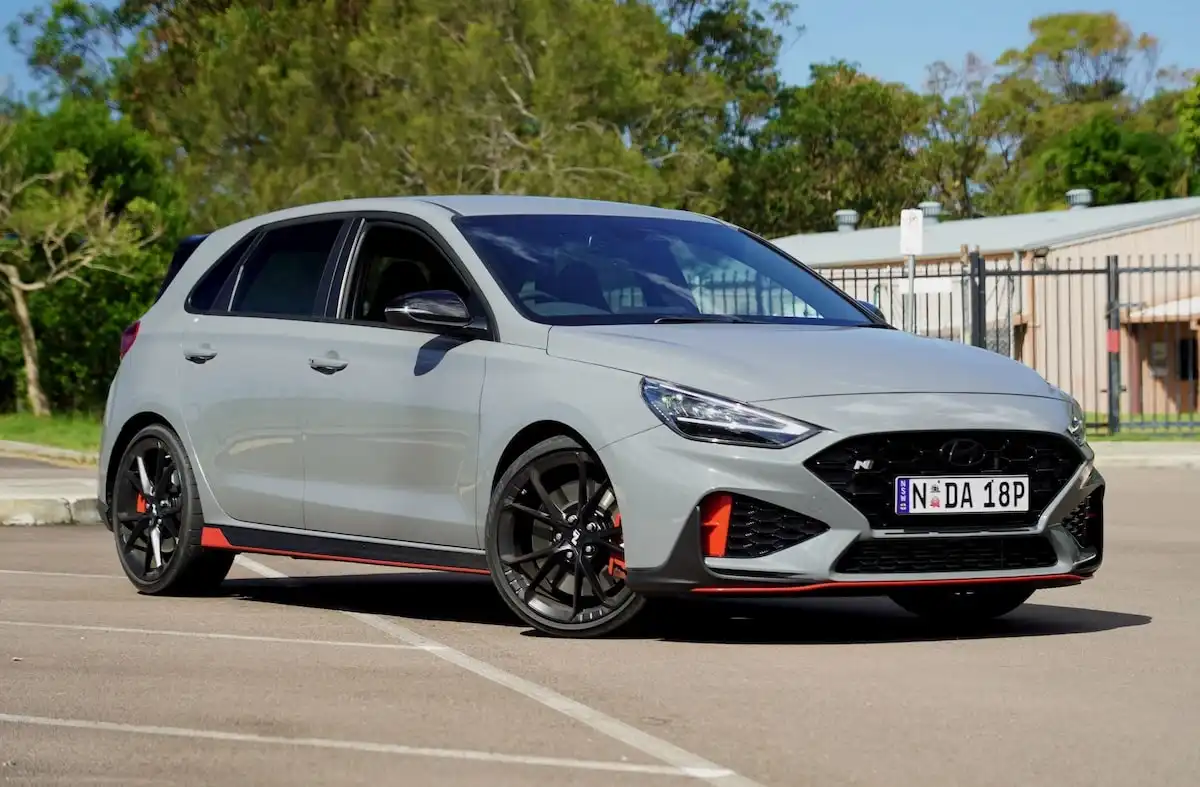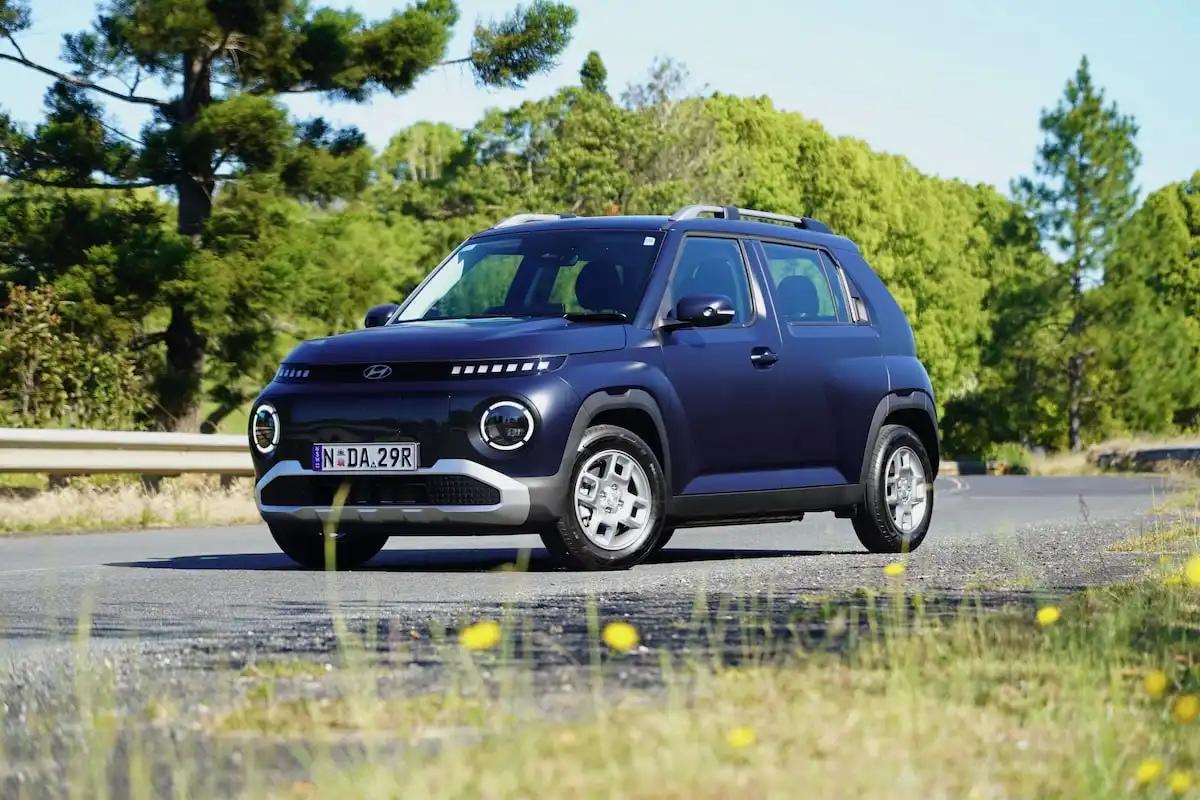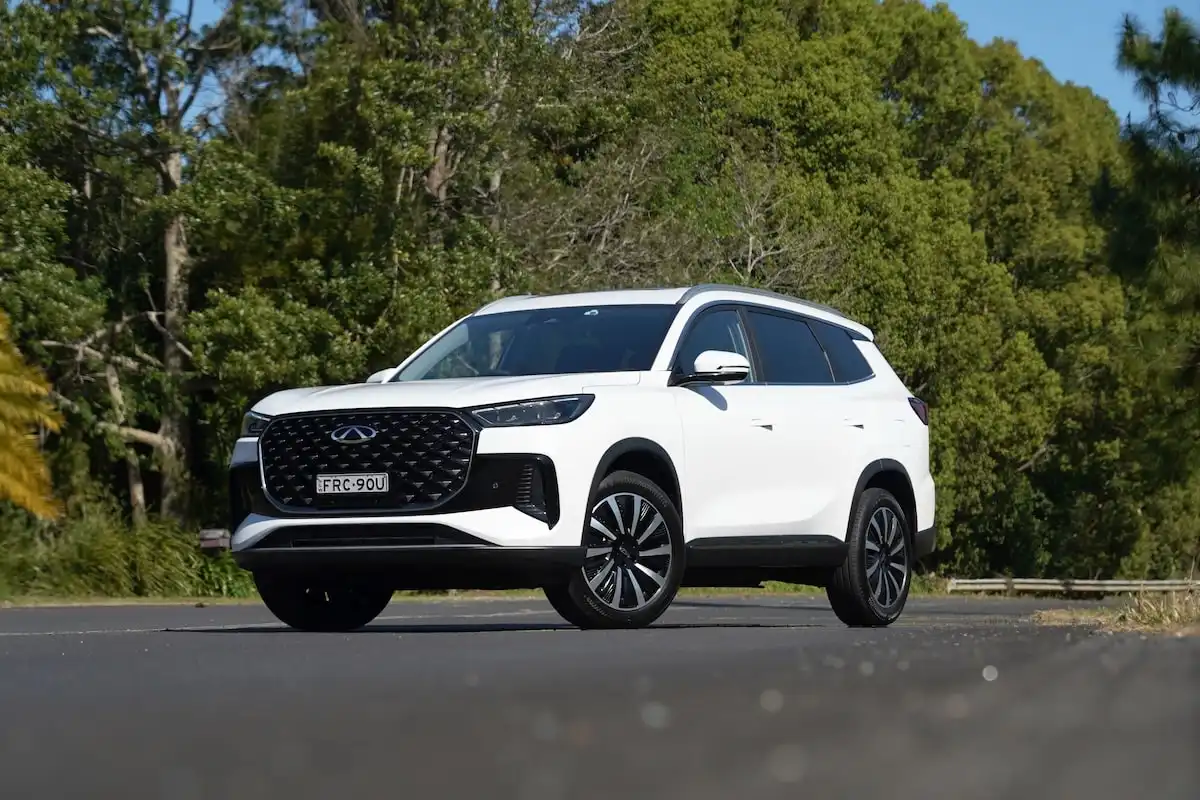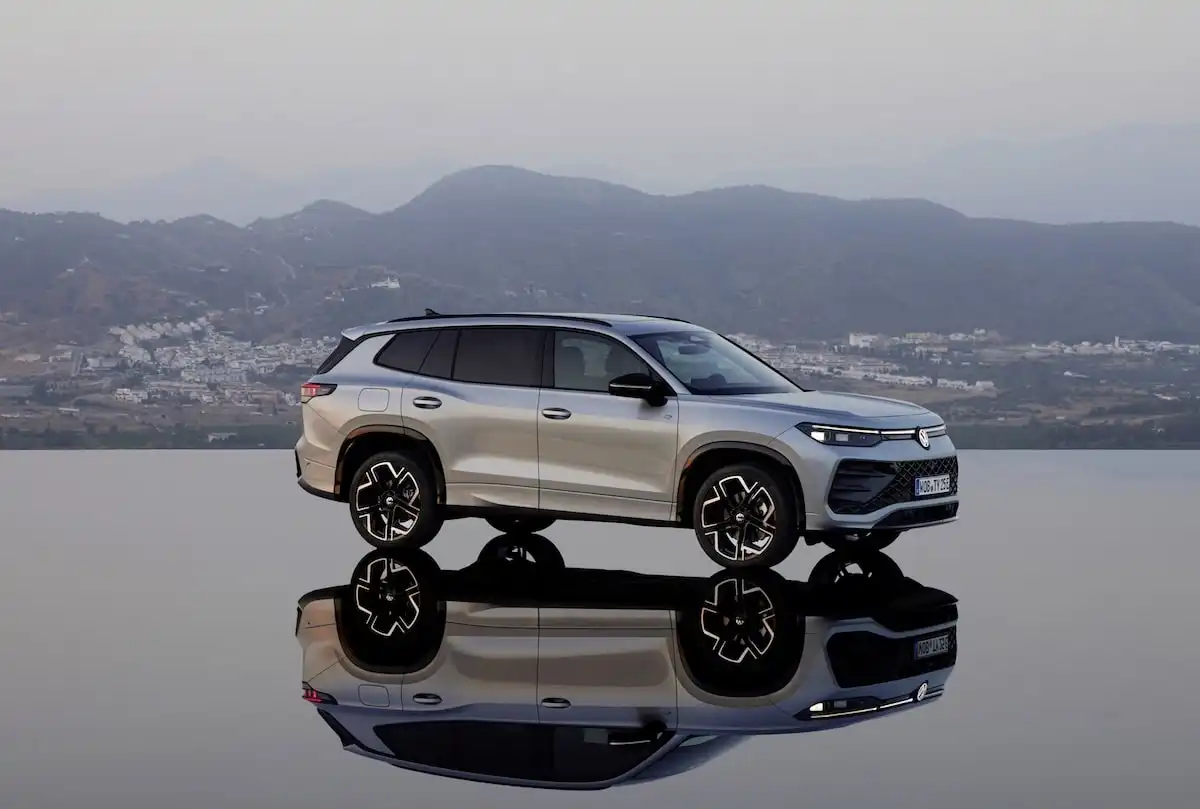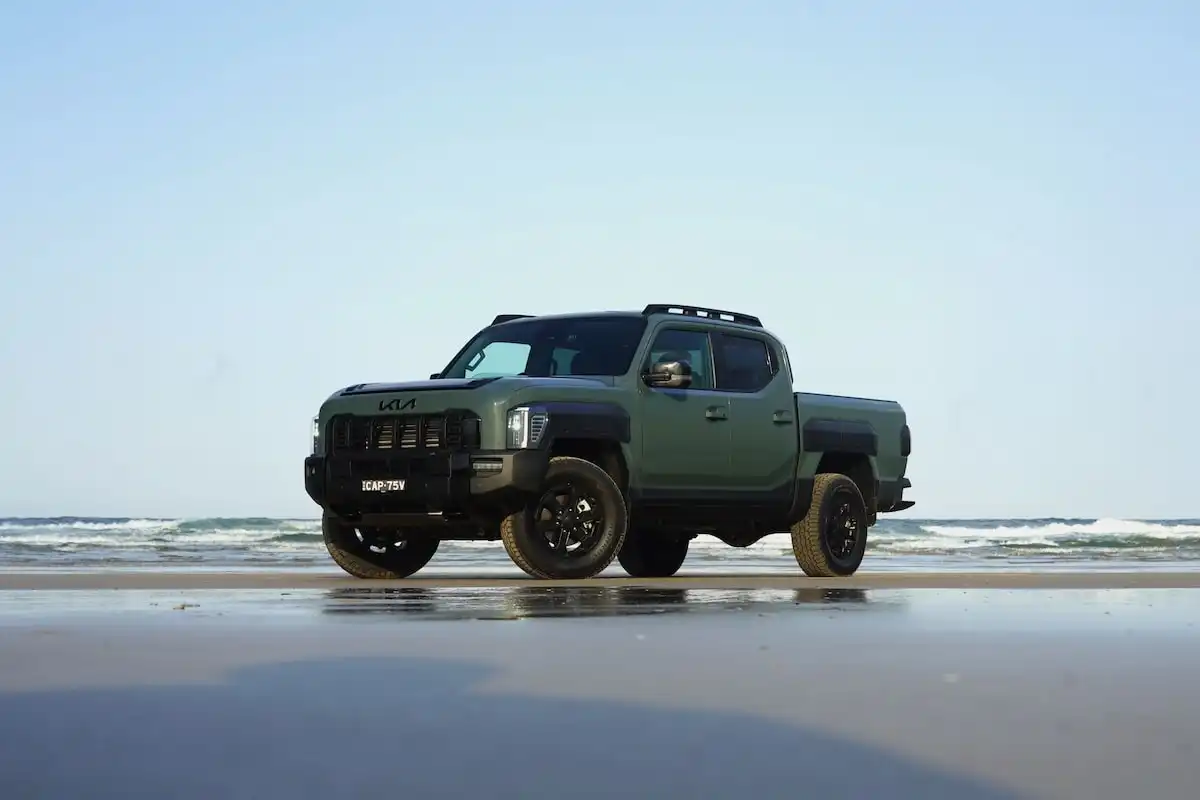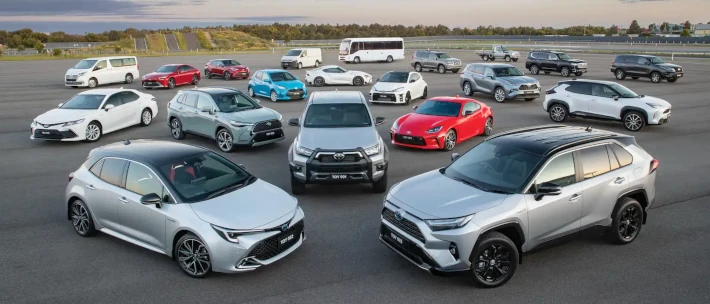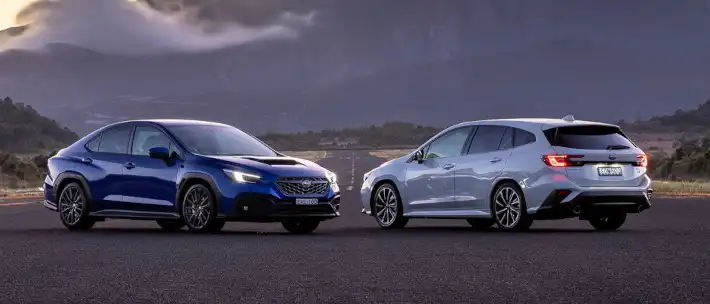Since bursting onto the scene in 2018, the i30 N has found its way into the hearts of enthusiasts and woken up neighbours all around Australia with its loud, burbling exhaust; it’s the enemy of early risers nationwide.
With the wider automotive industry becoming a little bit vanilla in recent years, the i30 N rejects boring conformity and aims to be the leading hot hatch option for buyers looking for a reasonably practical hatchback that can set your hair on fire when prompted.
A big, burning question remains, though - does the i30 N carry over its naughty personality with an automatic transmission, or does it spoil the party altogether, and what extras do you get in the range-topping N Premium version.
To find out, we got behind the wheel of the MY25 Hyundai i30 N Premium Automatic to see how it measures up against its rivals and whether you should spend extra for the premium version.
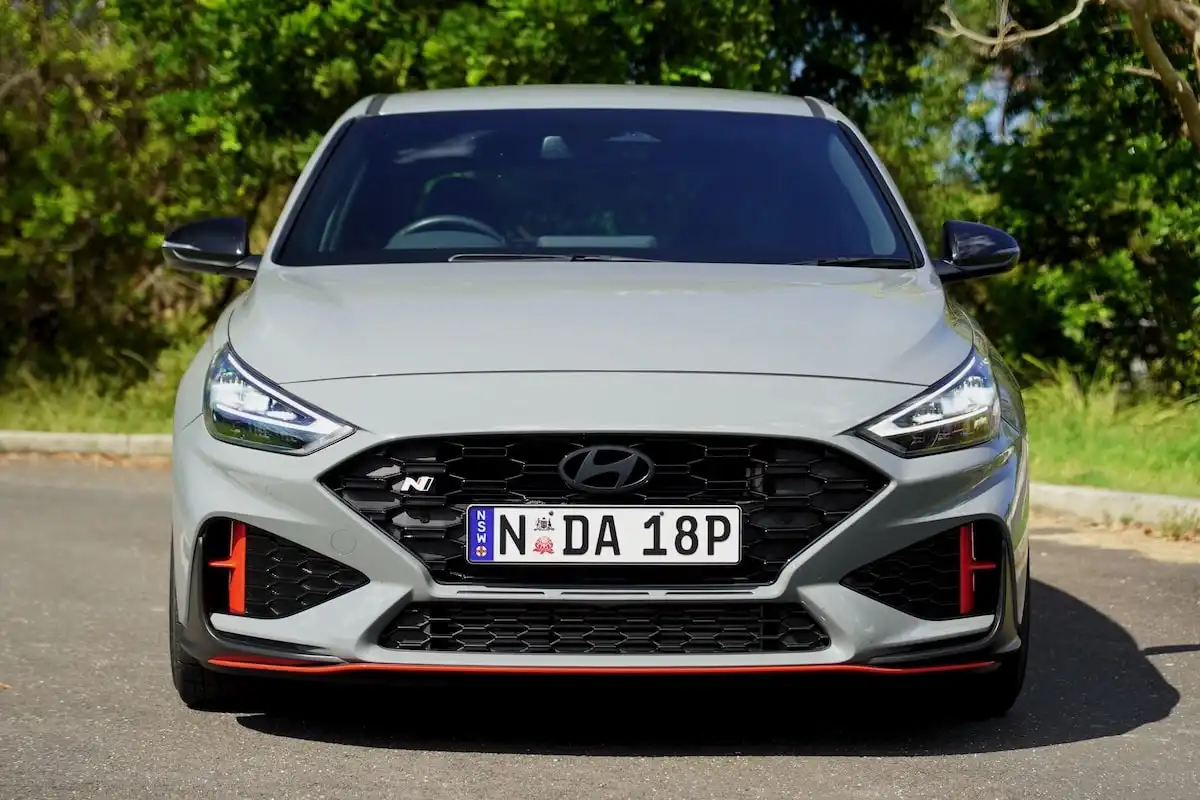
Hyundai i30 N Competition
Hyundai i30 N |
VS |
Toyota GR Yaris |
| Volkswagen Golf GTI | ||
| Cupra Leon VZx | ||
| Honda Civic Type R | ||
| Toyota GR Corolla | ||
| BMW 135i | ||
| Audi S3 |
How Much Does the Hyundai i30 N Premium Automatic Cost?
Prices for the MY25 Hyundai i30 N range kick off from $50,000 for both the i30 N Manual and the i30 N Automatic.
Hyundai’s premium version picks up some extra kit and a price increase up to $53,500 for both the i30 N Premium Manual & Automatic range.
Notably, the MY25 i30 N range has received some significant price hikes, particularly for manual versions, which are now $3,800 more expensive than last year, while automatic variants have seen prices increase to a lesser degree, now $800 more than expensive than last year’s model lineup.
-
Hyundai i30 N Manual - $50,000
-
Hyundai i30 N Automatic - $50,000
-
Hyundai i30 N Premium Manual - $53,500
-
Hyundai i30 N Premium Automatic - $53,500 (tested)
Keep in mind that these prices are subject to change and do not include on-road costs.
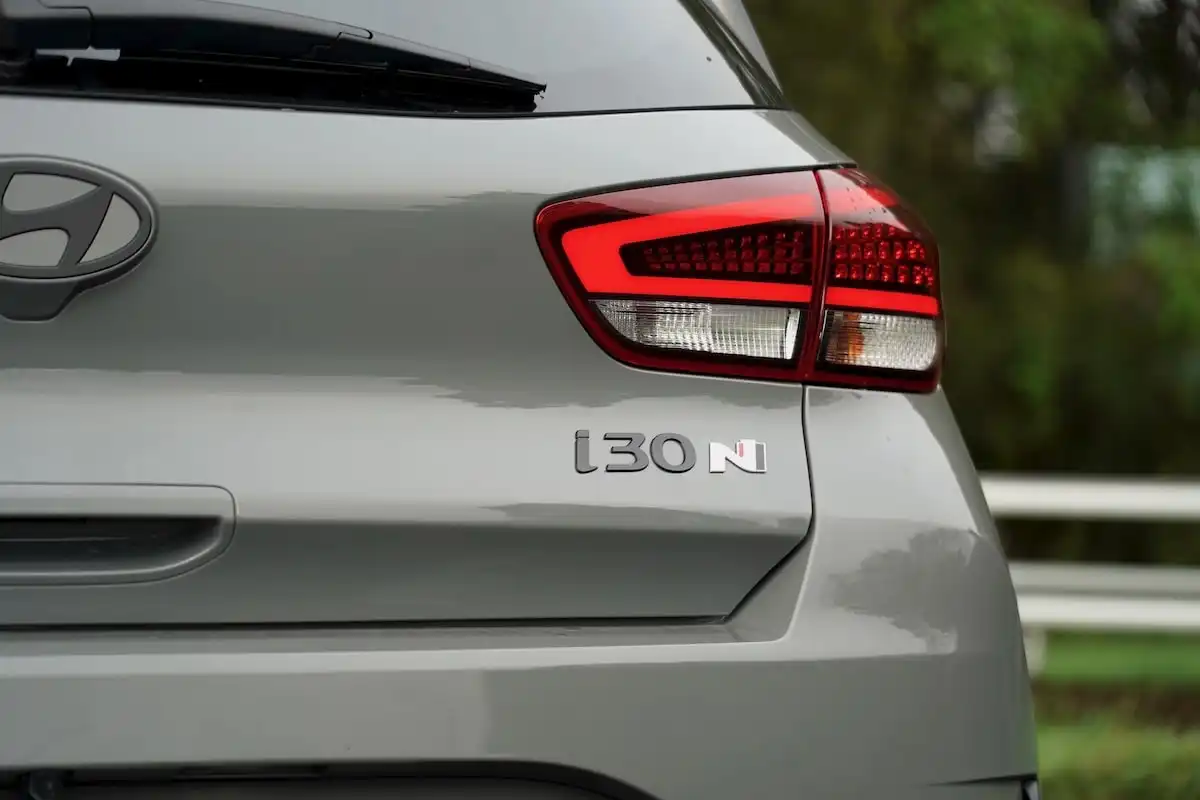
How Much Can OnlineAuto Save You?
Using OnlineAuto’s car buying service, you could save thousands on your next car with the help of our team of car-buying specialists.
Hyundai i30 N Premium Automatic Specifications
| Model Date | 2025 |
| Make | HYUNDAI |
| Model | i30 |
| Series | PDE.V6 MY25 |
| Variant | N PREMIUM |
| Body | 5D HATCHBACK |
| Fuel type | UNLEADED PETROL |
| Transmission | 8 SP AUTO DUAL CLUTC |
| Drive | FWD |
| Engine | TGDi |
| Engine capacity | 1591 |
| Engine configuration | VARIABLE DOUBLE OVERHEAD CAM / 16 valves |
| Engine RPM | 6000.0 / 2100.0 |
| Cylinders | T4 |
| Torque | T4 |
| KW | 206 |
| Fuel tank size | 50.0 |
| Fuel usage specs | 8.5 / 0 |
| CO2 | 197 |
| ANCAP security rating | Unrated |
Get in touch with one of our Car Buying Specialists today.
Request a quoteWhat Features Does the Hyundai i30 N Have?
The i30 N range comes riding on a set of 19-inch forged alloys wrapped in Pirelli P Zero rubber and receives an adaptive suspension system, an electronic limited-slip differential, a variable exhaust system, launch control, beefy 360mm front brakes and a rear stiffness bar.
New features for the MY25 Hyundai i30 N include the upgraded 10.25-inch digital instrument cluster, keyless entry & start and automatic wipers.
The entry-level i30 N also picks up cloth upholstery, a bespoke N styling package with LED head & tail lights, cruise control, cloth upholstery with a leather-wrapped steering wheel & gear lever, a rear-view camera with front & rear parking sensors, dual-zone climate control, a wireless smartphone charger and heated, power-folding mirrors.
Hyundai’s flagship i30 N Premium range picks up all of the above and bundles in a pair of heated N Light bucket seats, a heated steering wheel, a solar windscreen and upgraded Alcantara and leather seat upholstery.
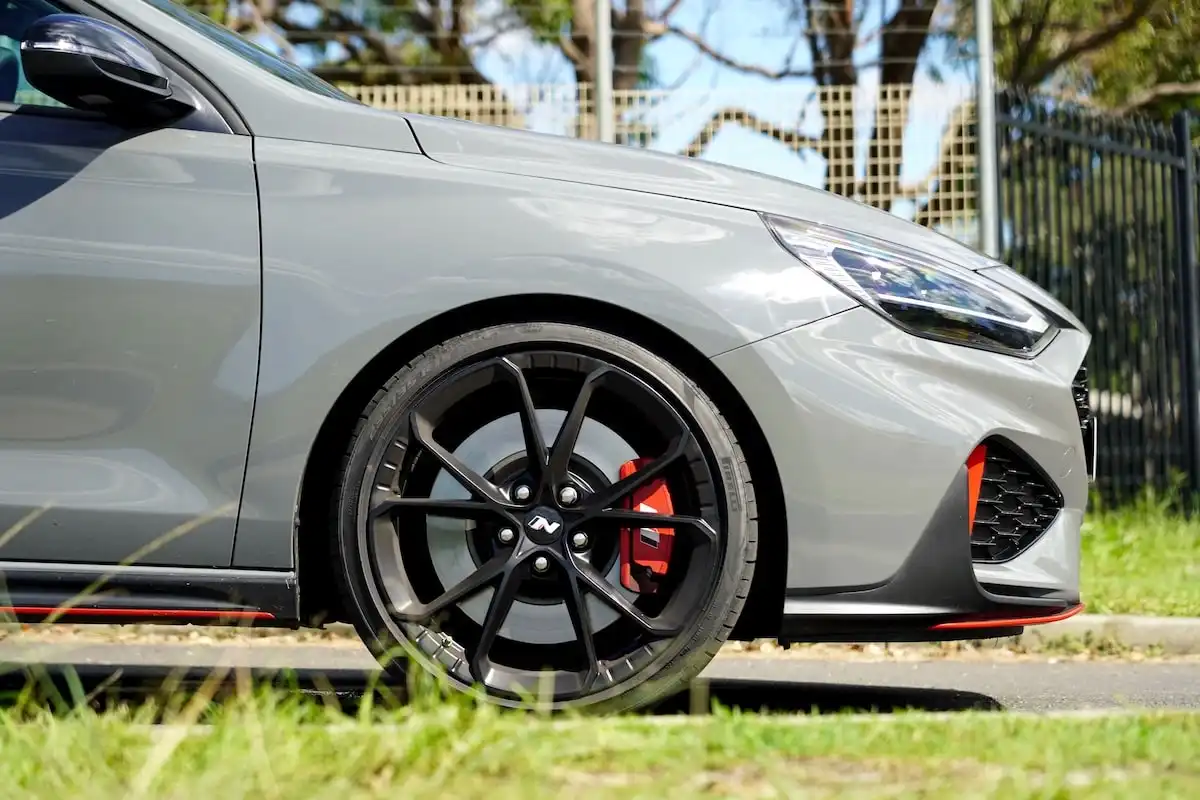
Hyundai i30 N Connectivity & Infotainment Features
Hyundai packages the i30 N range with a 10.25-inch touchscreen infotainment system sitting atop the dashboard, which we’ve seen in previous models for quite some time now.
While it’s not the flashiest infotainment unit on the market, it’s a particularly solid package when it comes to features, with no shortage of menus to dive into and user-friendliness thanks to Hyundai’s simple layout and a home button that sits on the top left of the display.
The 10.25-inch display can get nice and bright, while the screen refresh rate and processing power are both fast enough to keep things feeling smooth while trawling through submenus.
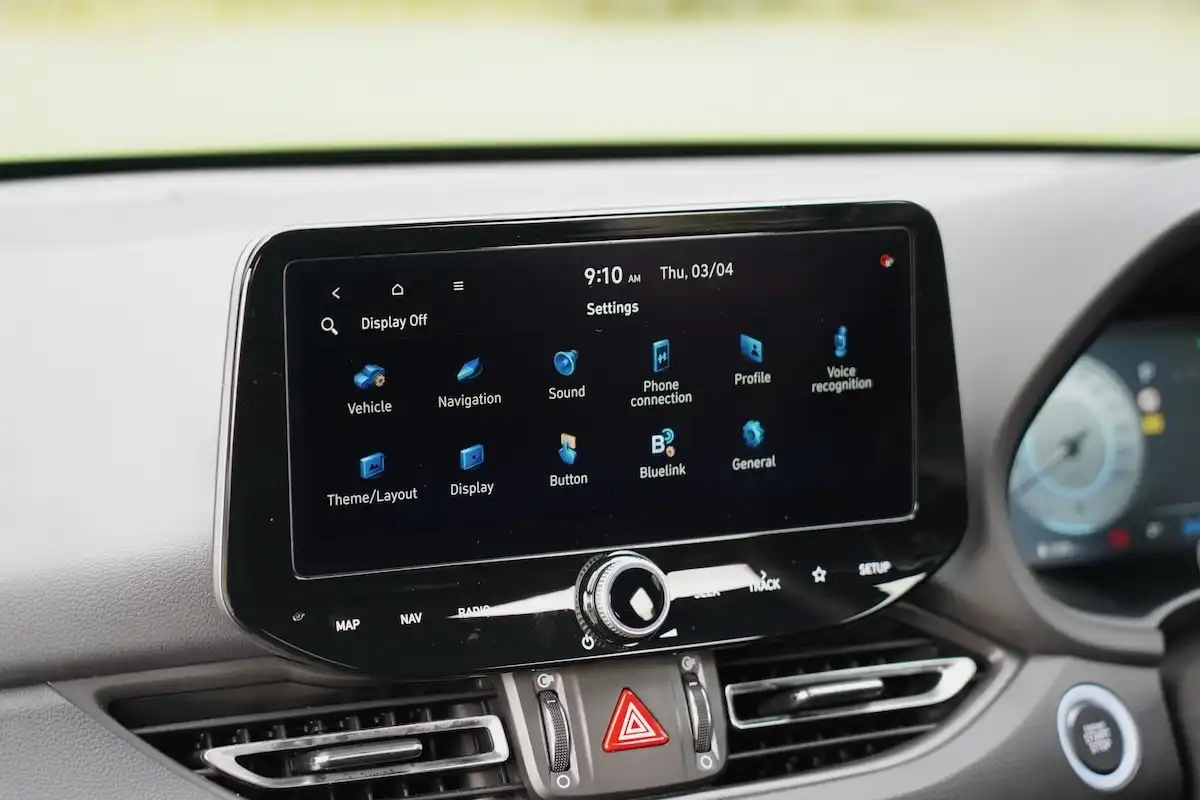
The i30’s infotainment system is packed with AM/FM and DAB+ digital radio as well as satellite navigation and is paired with six-speaker sound system that is a little underwhelming, but gets the job done.
Perhaps most importantly for enthusiast buyers, however, is the shortcut on the homepage signifying the near-endless list of tweaks you can make within Hyundai’s ‘N Mode’ settings.
This allows you to create a custom profile with your preferred settings for the engine, transmission, exhaust, suspension, steering, e-LSD and the stability control, the majority of which have three different settings.
Hyundai’s thoughtful and incredibly well-executed performance menu will be a favourite for many and remains one of the most impressive in the segment when it comes to sheer customisation.
i30 N buyers also pick up a five-year subscription to Hyundai’s Bluelink connected services suite that offers remote vehicle controls, live traffic updates, SOS calls with automatic collision notifications and a voice assistant.
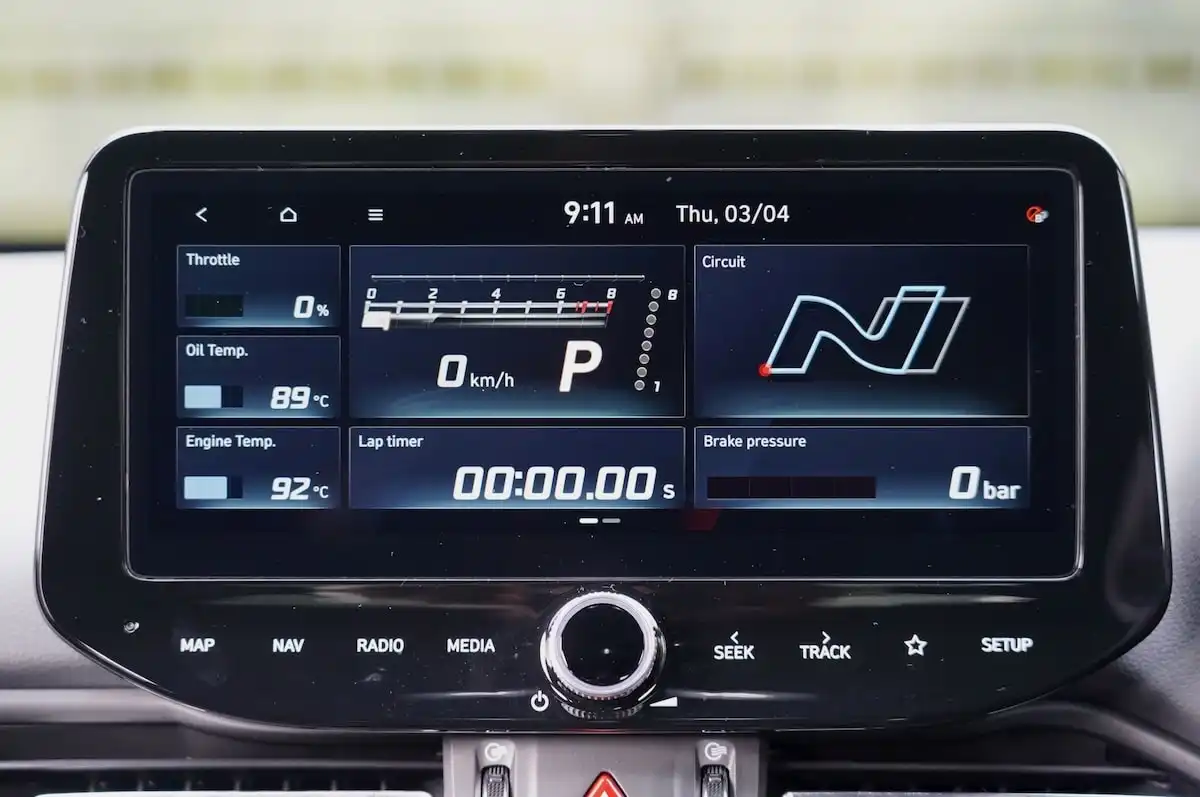
Does the Hyundai i30 N Have Wireless Apple CarPlay & Android Auto?
I30 N buyers will need to bring their own USB cables in order to access Apple CarPlay & Android Auto on the move because there’s no wireless smartphone mirroring on offer.
Hyundai’s 10.25-inch infotainment system requires a physical connection in order to pair with your smartphone, with no wireless Apple CarPlay or Android Auto currently offered in the i30 N range.
During our week behind the wheel, we experienced no drop-outs in the connection between our iPhone and the i30 N’s infotainment system, which is certainly one of the advantages of a wired connection.
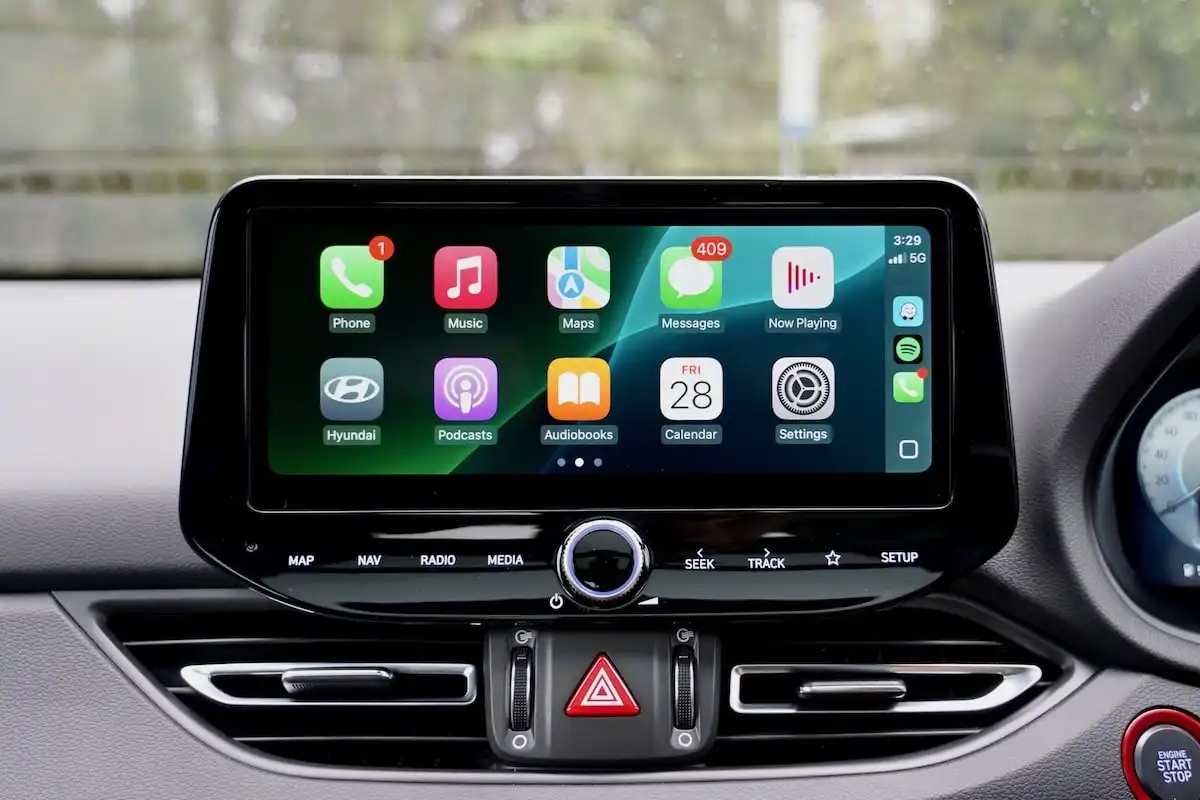
How Fast is the i30 N?
It’s a seriously rapid package that wastes no time in charming your socks off.
We won’t go into too much detail as to the i30 N’s performance chops because it has very much asserted itself as a hot-hatch hero in the segment, thanks to its potent turbocharged powertrain.
Lift up the bonnet up you’ll find a 2.0-litre turbocharged four-cylinder petrol lurking beneath, capable of producing 206kW of power and up to 392Nm of torque, with power in this case being thrown to the front wheels via an eight-speed dual-clutch transmission.
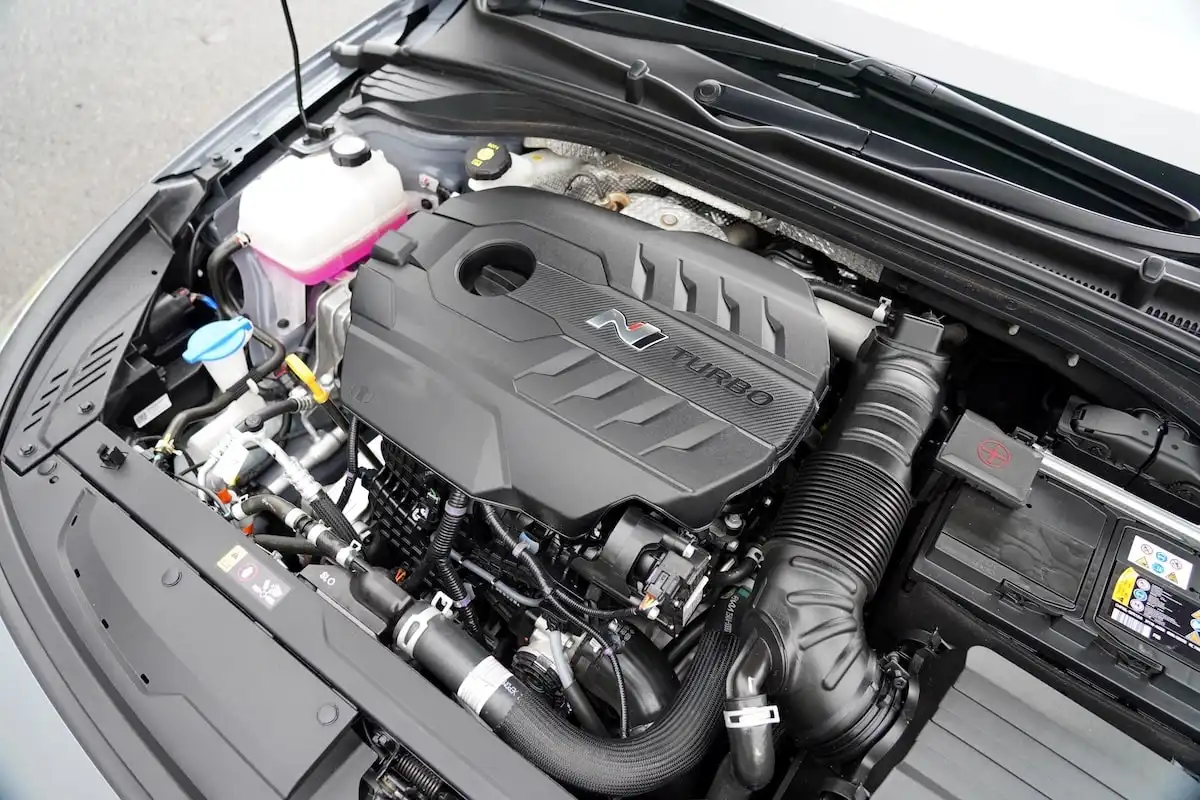
Hyundai says the i30 N DCT automatic is capable of hitting 100km/h in 5.6 seconds and we can certainly vouch for this figure, even though it feels faster thanks to the visceral upshifts and popping exhaust.
We absolutely love Hyundai’s turbo four-pot powering the i30.
It’s gutsy and while there’s noticeable turbo lag in the lower parts of the rev range, it’s a crackling little engine that feels like it can withstand some serious punishment and sounds seriously mean with Hyundai’s cheeky exhaust system that crackles and pops like there’s a gunfight breaking out.
When it’s time to slow down, the i30 N’s 360mm front brakes provide tonnes of stopping power and little in the way of fade over consistent clamps, making it a serious track day option right from the factory.
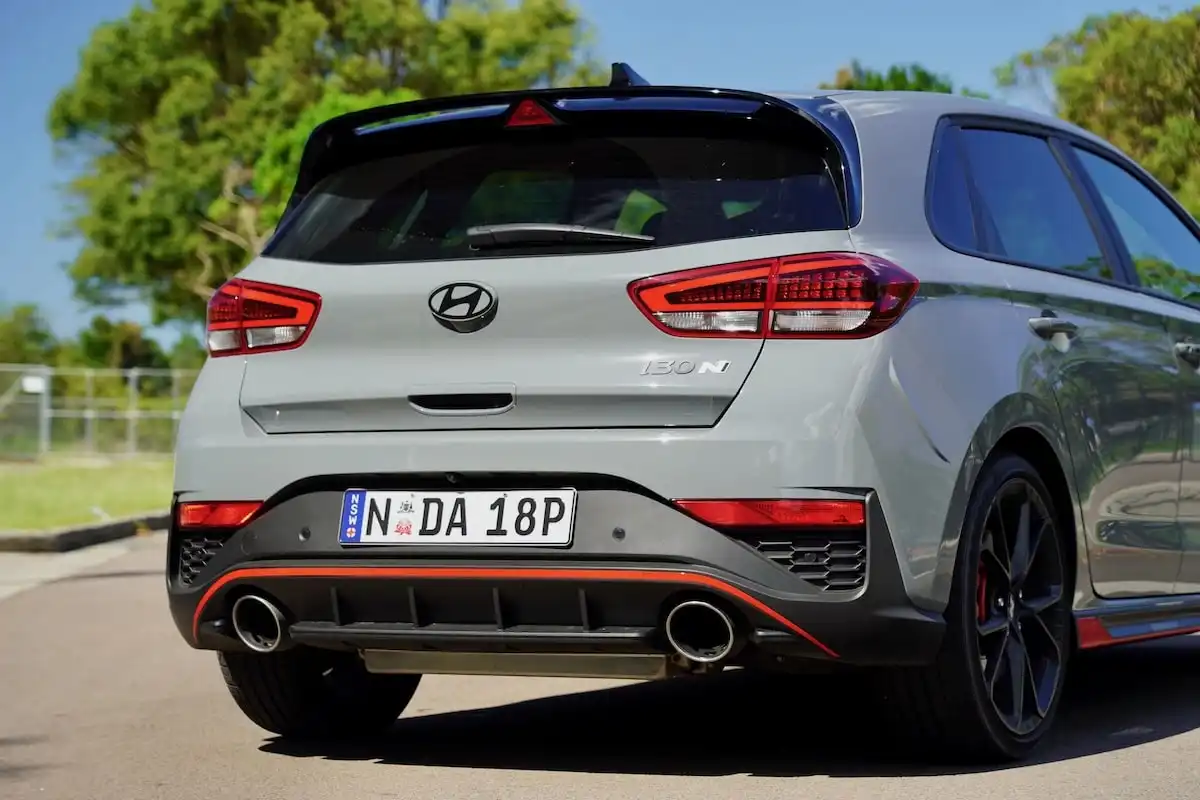
Hyundai’s e-LSD proves nothing short of a marvel when you get greedy with the throttle mid-corner, mitigating what would otherwise be excessive understeer and helping to pivot around tight bends and allowing you to put the power down early as you exit.
As for the transmission, there’s no faulting the execution of the eight-speed dual-clutch transmission, though it’s hard to ignore the allure of a manual box in such a driver-centric package.
That said, shifts are super snappy from the DCT box, and it certainly makes the i30 N a more user-friendly package for town drivers tackling frequent traffic jams; hats off to Hyundai for offering both and, more importantly, retaining manual versions for Australia.
All up, Hyundai has done an outstanding job with the i30 N, which proves itself as one of the most dynamic front-wheel drive packages on the market, but does all this performance come at the expense of the everyday driving experience?
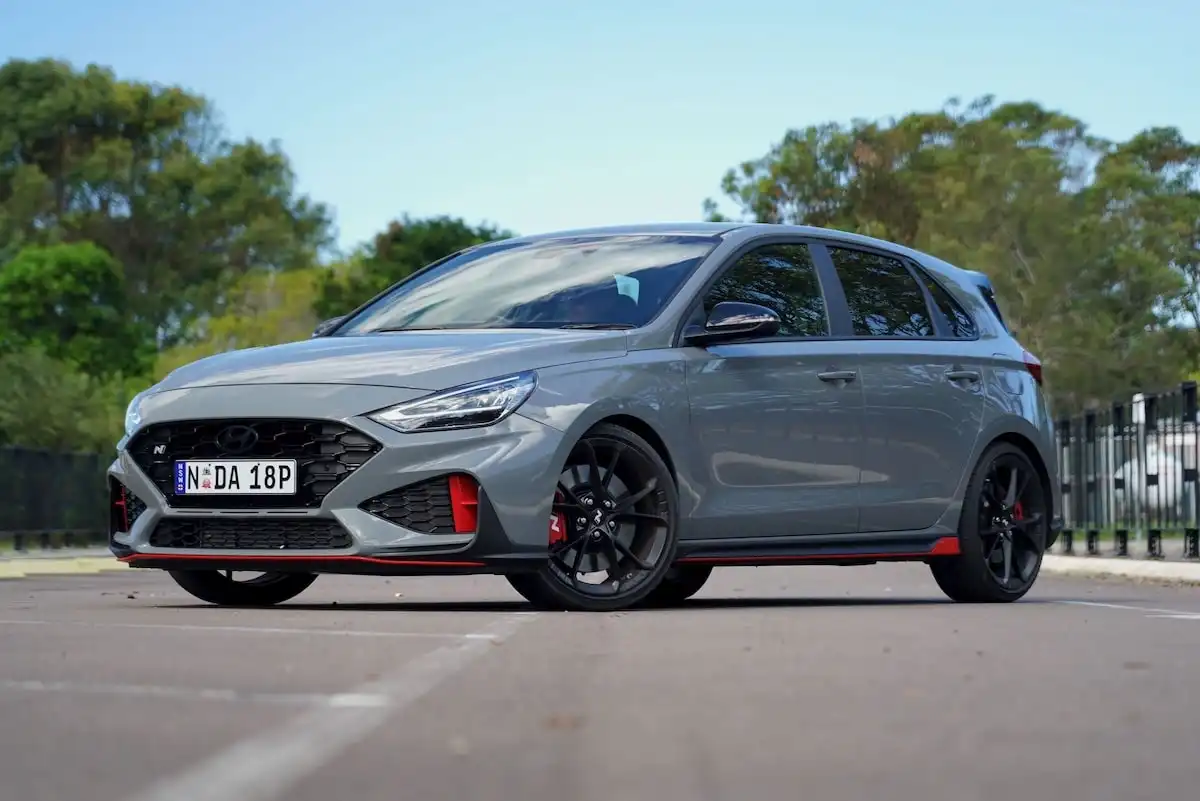
Is the Hyundai i30 N a Comfortable Daily Driver?
One of the biggest appeals of a hot hatchback is the versatility it offers.
After all, the most influential hot hatches are rapid when pushed, but retain all the practical and user-friendly hallmarks of their base car that make them a viable daily driver.
In this respect, the i30 N doesn’t disappoint, though there are some noticeable trade-offs, namely when it comes to ride comfort that buyers need to be aware of before signing the dotted line.
These quirks come down mainly to the steering and suspension which have been upgraded and tuned for track-munching over on-road refinement.

With its sportier steering ratios, the i30 N’s turning circle is slightly wider - 11.6m, up from 10.6m in the regular i30 range - but you’ll only really notice when tackling a tight car park.
While it’s slightly less agile in tight quarters, the i30 N’s stout footprint helps to keep things user-friendly in a car park, while the steering remains light enough that you’ll acclimatise pretty quickly.
Pick up the pace and the i30 N proves itself as a rapid and charming little city car.
The front end is lightning fast while darting around corners, the steering is wonderfully communicative and ample torque from its turbocharged engine makes light work of a town run.
Arguably, the biggest holdback on a daily drive is the sports suspension package, which magnifies even the most minute of road imperfections.
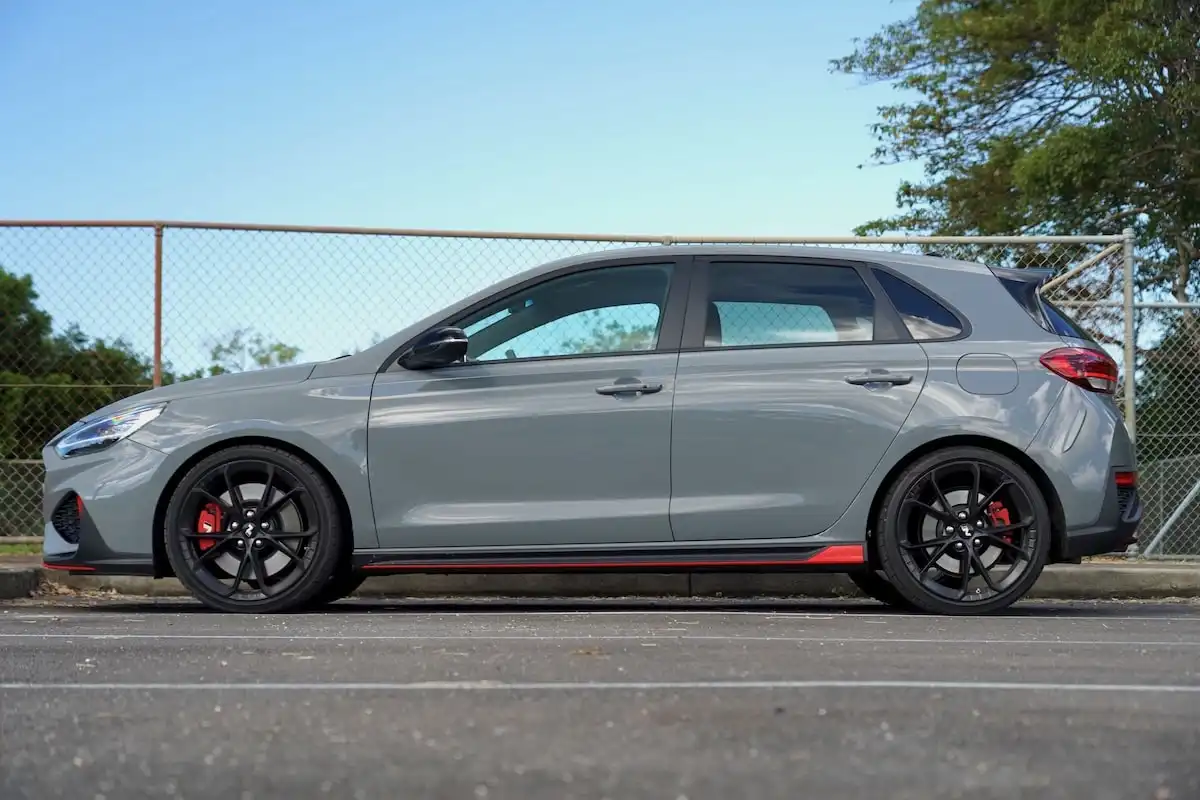
The majority of buyers will be well aware that this comes with the territory of having a stiff, performance-focused suspension package underneath, but it’s something to put on your radar if you live regionally or frequent some sub-par roads.
In normal mode, the i30 N’s adaptive dampers will soften up considerably, but they’re unable to soak up too much punishment without sending some of that into your backside.
Other than that, though, it’s a great little package that makes light work of a run around town and charms your socks off in the process.
There’s quite a bit of road noise at highway speeds, though overall, it’s a pretty well-mannered long-distance tourer with no shortage of power for bursts of overtaking.
All up, the daily driving experience isn’t without its compromises, though it’s safe to say buyers will be quick to forgive its foibles once they open up the variable exhaust and find themselves grinning from ear to ear.
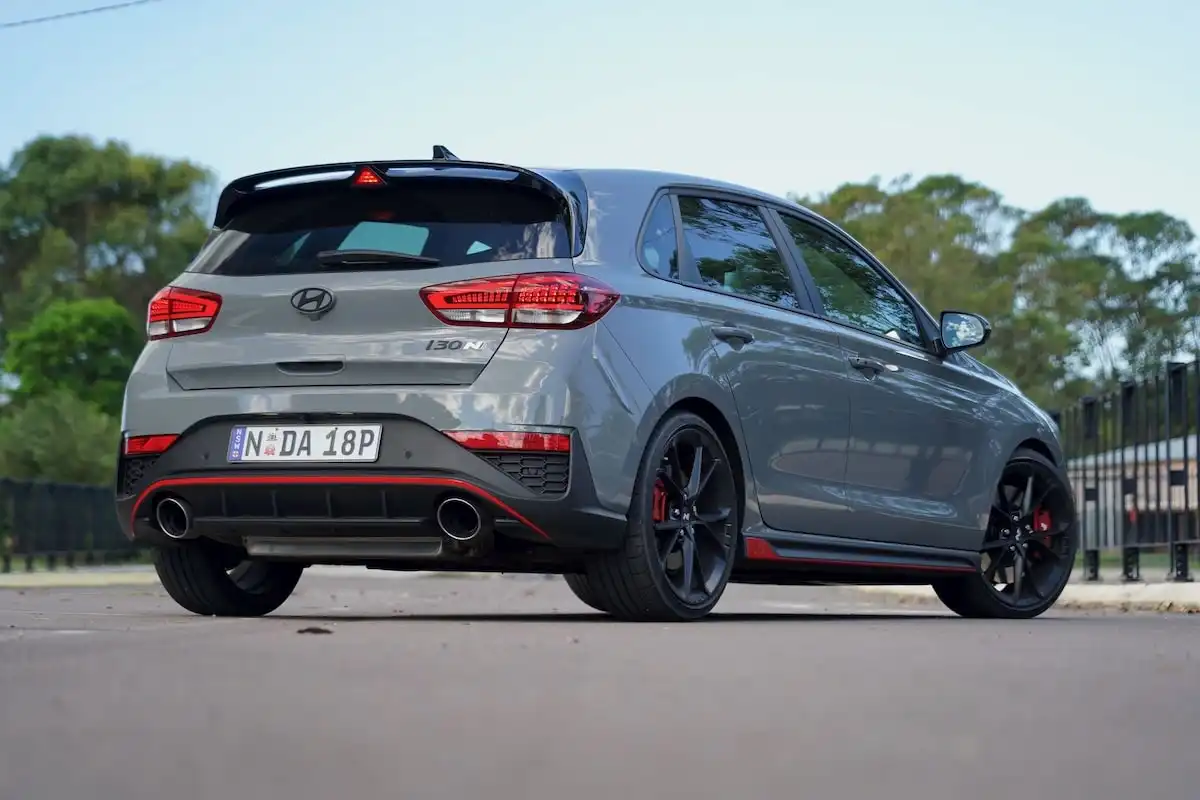
Is the Hyundai i30 N Fuel Efficient?
As a performance-focused hot hatchback, the i30 N certainly isn’t an efficiency hero.
The pursuit of pace means that you’ll be lucky to match Hyundai’s official fuel consumption figures of 8.5L per 100km on a combined cycle.
In our time behind the wheel, we averaged 8.8L per 100km over 643km worth of country, town and highway driving.
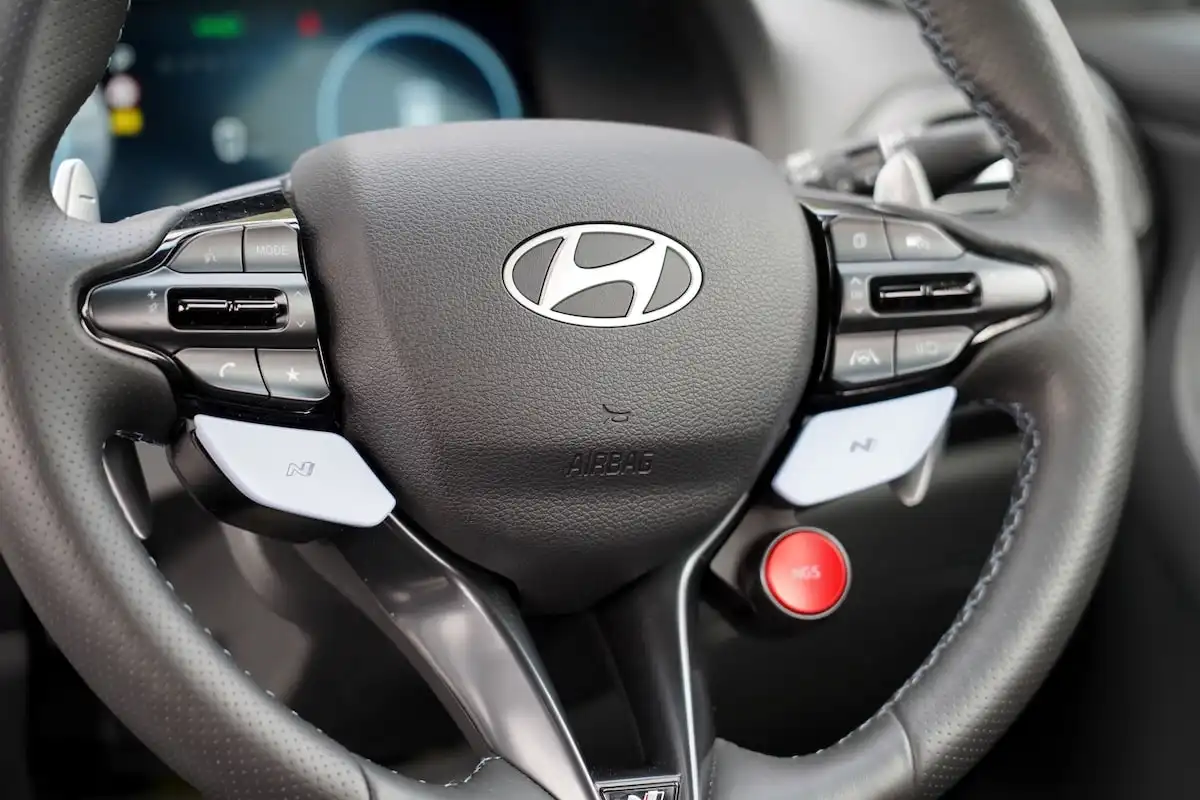
Admittedly, there were more than a few times the popping exhaust lured us into, shall we say, not the most economical of driving styles, and you can definitely improve on our figures with a more responsible right foot.
The i30 N has a 50L fuel tank and can drink 95 RON which is quite a nice touch, being able to sip lesser-quality fuel than some of its 98 RON-only rivals.
-
i30 N City Fuel Consumption: 11.9L per 100km
-
i30 N Highway Fuel Consumption: 6.5L per 100km
-
i30 N Combined Fuel Consumption: 8.5L per 100km (claimed)
-
i30 N Combined Fuel Consumption: 8.8L per 100km (tested)
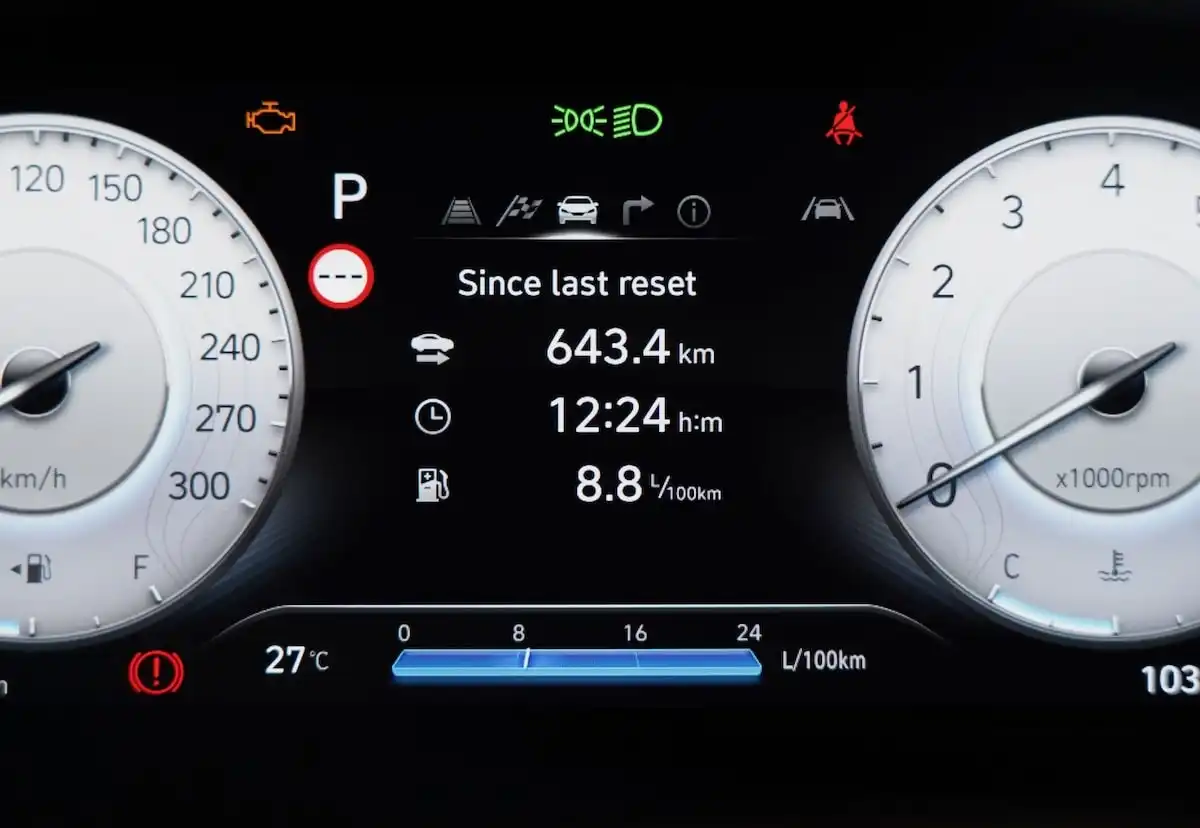
Is the Hyundai i30 N Practical?
Step inside and you’ll find that the range-topping i30 N is virtually unchanged from the regular hatch, albeit with some bright buttons on the steering wheel that sit as a not-so-subtle hint at its true potential.
While it might be a little bland for some tastes, Hyundai’s move to focus more on the i30 N’s underpinnings rather than its interior cabin is a far better investment.
The addition of a 10.25-inch digital instrument cluster, new for MY25 i30 N models, certainly adds a nice splash of modernity into the otherwise ageing cabin, but it’s uncomplicated, at least.

The low-slung driving position can be lifted manually for shorter drivers while Hyundai’s Alcantara and leather-upholstered bucket seats are absolutely lovely, providing nice thick side bolsters without hugging you too tightly.
We were quite surprised to find that these bucket seats were more accommodating to wide torsos than the regular i30 N Line Premium.
In terms of ergonomics, things are great inside the i30 N.
There’s tonnes of headroom with the seats sitting in their lowest position, a solid feel from the switchgear and a fully adjustable steering wheel with both reach and rake adjustment.
The wheel itself is great, with a nice chunky, perforated leather design that falls perfectly in hand.
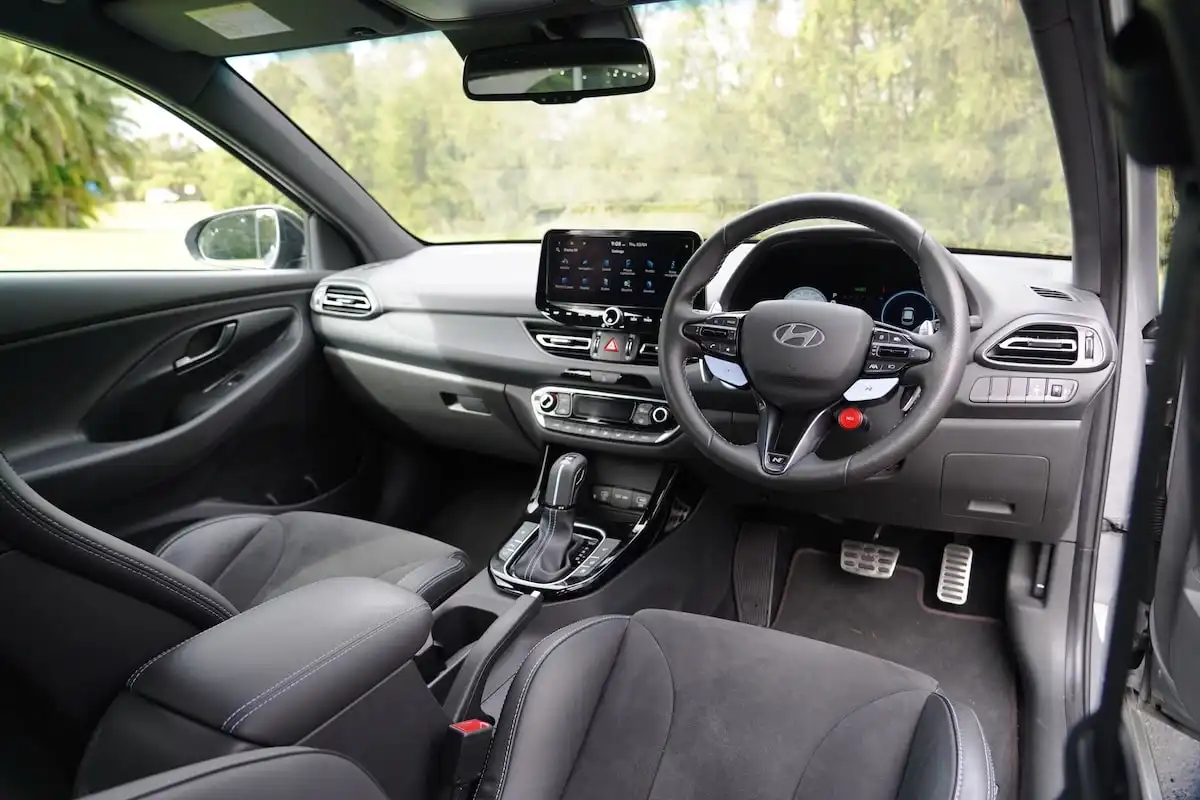
It’s hard to ignore Hyundai’s blue N buttons that sit atop a bright red NGS (N-Grin-Shift) button that provides more power and an even louder soundtrack for up to 20 seconds and adds to the theatre inside the otherwise understated cabin.
The right-hand door sill gets a somewhat soft finish but doesn’t offer much in the way of elbow support, while the leather-upholstered centre armrest provides more comfort.
The rest of the cabin is what you’ll find in a regular i30 hatch, meaning there’s physical controls for climate inputs and a relatively uncluttered dashboard design.
Storage options in the i30 N consist of a tray and wireless charging pad behind the gear lever, a pair of cupholders, a small storage area inside the folding armrest and door bins capable of swallowing up two small bottles and another stash for loose items.
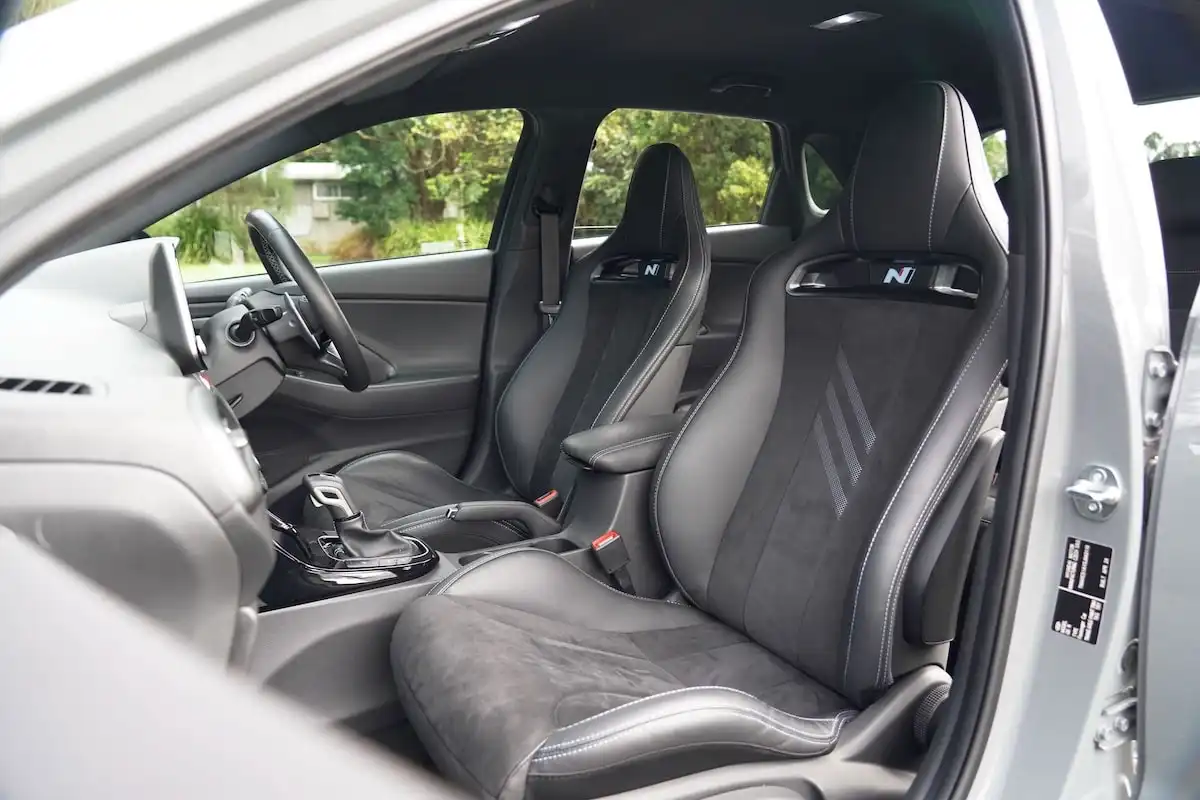
Move to the rear of the cabin and things are completely unchanged from the regular i30 hatch, with the exception of the more premium leather and Alcantara upholstery with blue contrast stitching.
The reach bench is elevated slightly and has qutie an upright seating angle which is great for posture but a bit tiresome on long trips, though there are no complaints for headroom nor legroom in the rear, even for adults.
Surprisingly, bucket sports seats prove to be far more practical than the bulkier seats you’ll find in the regular i30 hatchbacks.
This means that with the slim design, there’s ironically more legroom on offer for rear passengers in the performance-focused i30 N Premium than the standard i30.
Those in the rear pick up a pair of USB-C charging ports, a folding armrest with cupholders and a small door bin, but that’s it for creature comforts.
For the parents out there, the i30 N retains two ISOFIX anchors on each of the outboard seats, with three top tether mounts hiding behind the seatback.

How Big is the Hyundai i30 N’s Boot?
While it has to accommodate a rear strut brace, the i30 N’s boot is still a pretty practical affair, which certainly helps to bolster its appeal as a proper, versatile little hot hatch.
With the rear seats standing, there’s a pretty healthy 381L worth of boot space which makes it more capable than both the GR Yaris & Corolla, as well as the legendary VW Golf GTI.
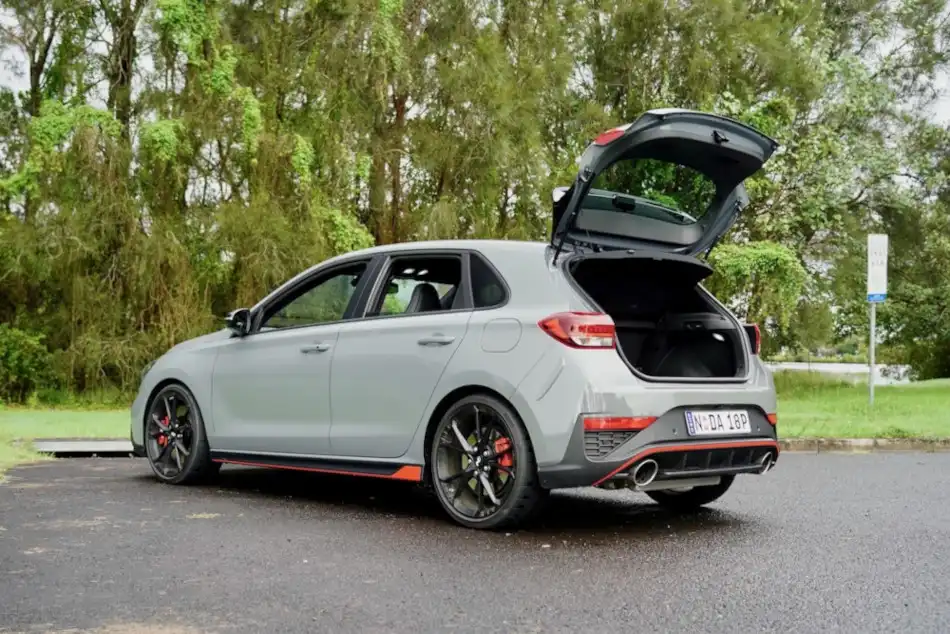
That’s enough to fit two carry-on suitcases sitting side-by-side in the rear, without having to fold down the second row.
When you do fold down the rear seats, you’ll unlock a maximum of 1,287L worth of boot space when it’s time to lug around big, bulky items, with a space-saver spare tyre hiding beneath the boot floor.
There’s a pretty noticeable load lift at the boot opening, which can make unloading heavy items a bit more cumbersome, but overall, the i30 N performs extremely well when it comes to boot space in the hot hatch segment.
-
i30 N Boot Space Minimum: 381L
-
i30 N Boot Space Maximum: 1,287L
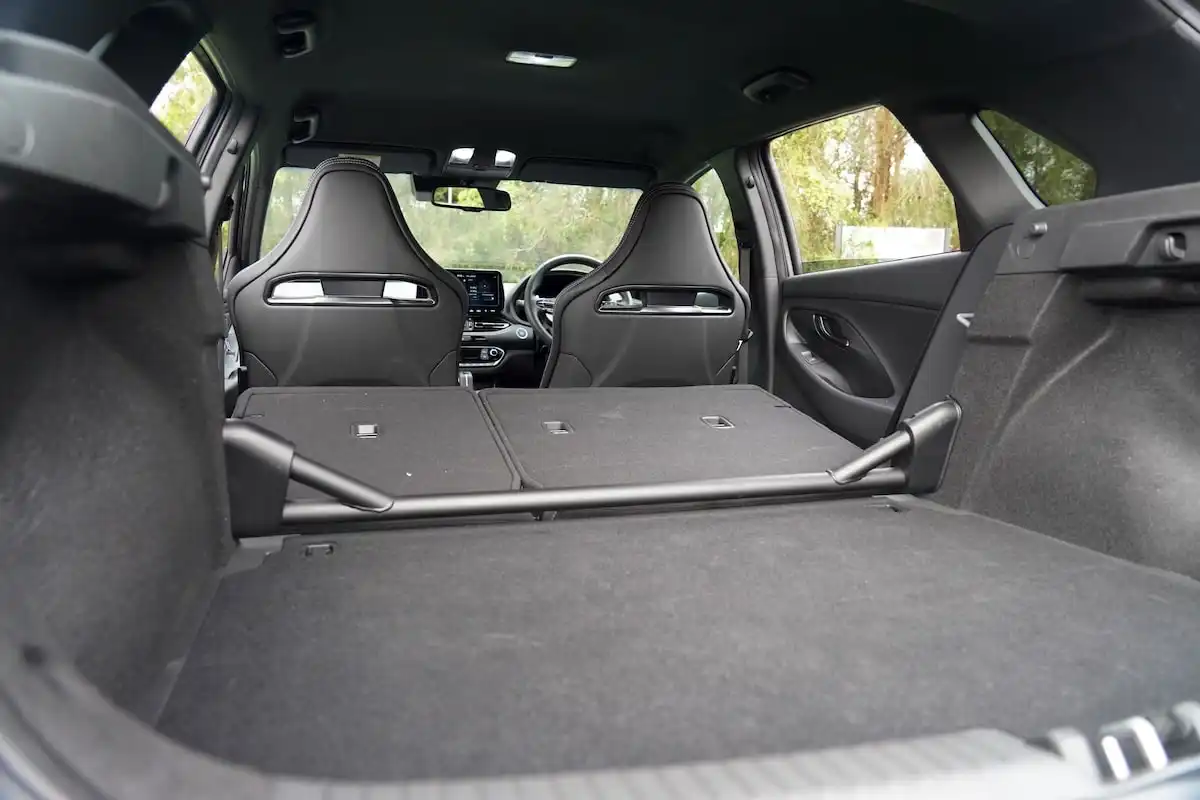
Is the Hyundai i30 N Premium Safe?
While Hyundai has added even more safety equipment into the latest MY25 i30 N range, there is a glaring omission from the list.
As standard, buyers pick up autonomous emergency braking with pedestrian & cyclist detection alongside blind-spot assist, rear cross-traffic assist, lane-keep assistance with lane-centring, multi-collision braking, safe exit alerts, driver attention monitoring and a rear-view camera with front & rear parking sensors.
An auto-dimming rear-view mirror, rear occupant alerts a speed limit assist have all been bundled in for the latest model year.
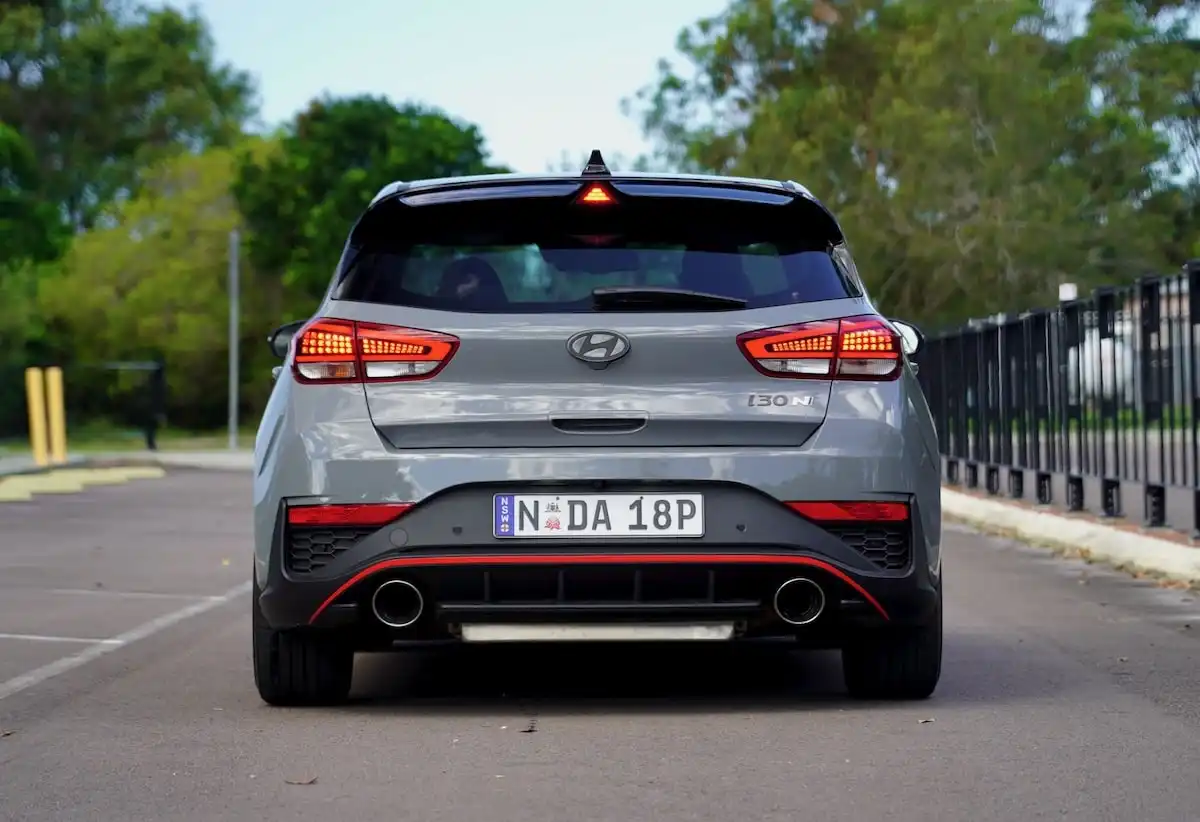
One noticeable absence, though, remains an adaptive cruise control system for the i30 N which may or may not be a concern for you, but it’s something to keep in mind.
All up, the i30 N ticks most of the important boxes when it comes to safety equipment, though it would be nice to see adaptive cruise join the features list in the near future.
The MY25 i30 hatchback has not received an ANCAP safety rating.
What Warranty Does the Hyundai i30 N Come With?
Hyundai offers the i30 N with a five-year/unlimited-kilometre warranty alongside a 12-month roadside assistance membership.
Roadside assistance can be extended for another 12 months, out to a lifetime, when servicing within the Hyundai network.
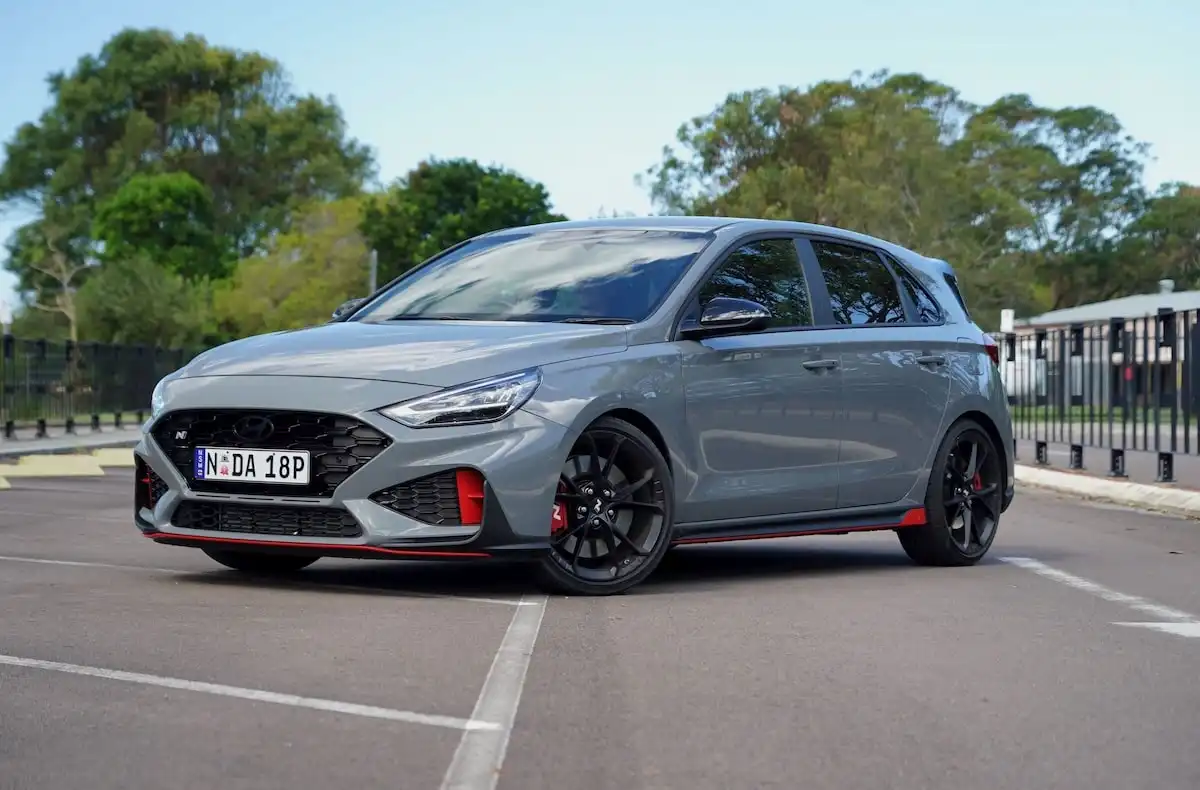
Hyundai also offers buyers five years of capped-price servicing, with costs totalling a very reasonable $1,885 for five visits to the service centre.
Service intervals for the i30 N stand at a relatively short 12 months / 10,000-kilometres, whichever elapses first.
Our Verdict: Is the Hyundai i30 N Premium Worth it?
The i30 N is truly one for the enthusiasts and sits as one of the best pound-for-pound, smile-inducing hot hatchbacks to ever hit the road.
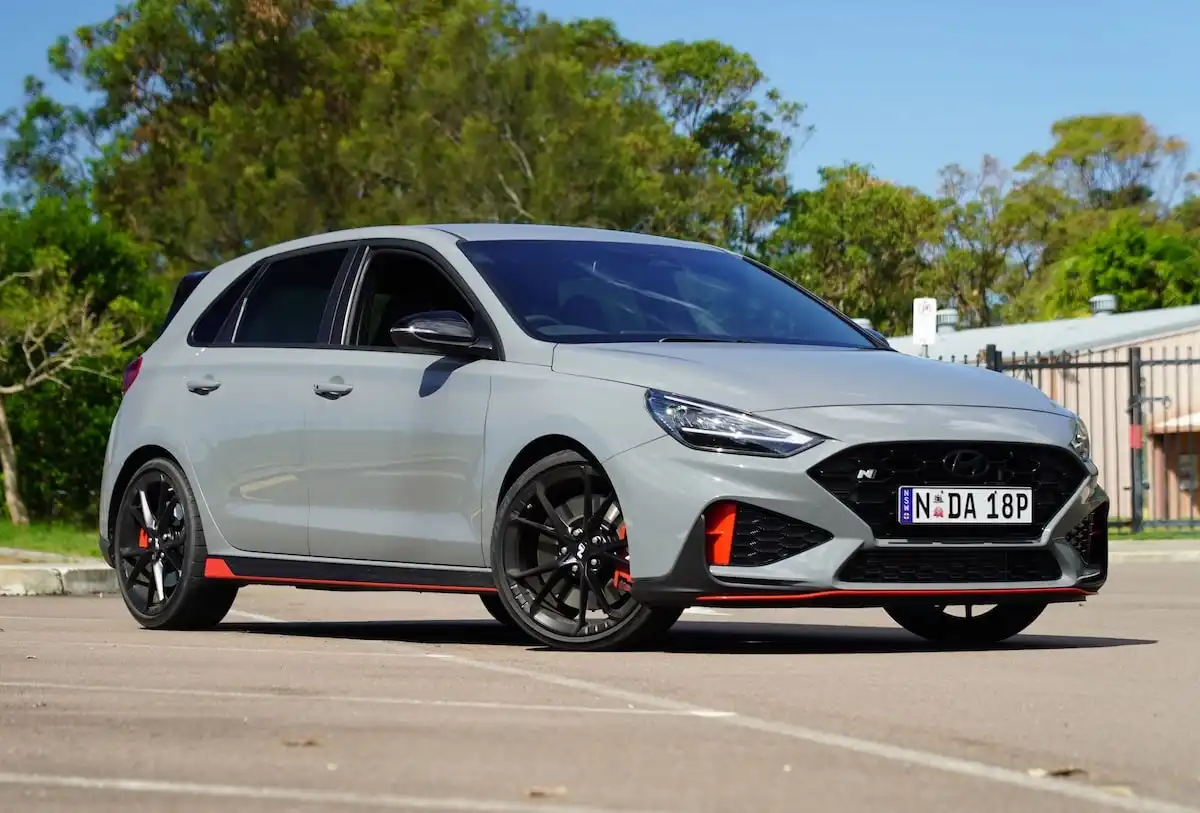
Considering its performance chops, we think that the i30 N is particularly well-priced in the current world of hot hatches and sits as a refreshingly old-school, naughty and potent performance package.
There’s an undeniable charm about the i30 N that, for $50k, is currently impossible to match.
Sure, there are some trade-offs in terms of the daily driving experience, though we know that most owners will be quick to forgive it once the first metallic pop rings out from its sports exhaust on a harsh upshift.
Do you need to upgrade to the i30 N Premium? Absolutely not - the most important things are all bundled into the base model, though $3,500 for the lovely, heated bucket seats and premium Alcantara upholstery isn’t the worst deal, either.
If you’re thinking of taking the plunge and upgrading to the i30 N as a second car or even your daily driver, be sure to reach out to one of our car-buying experts who can help find you the best possible price.
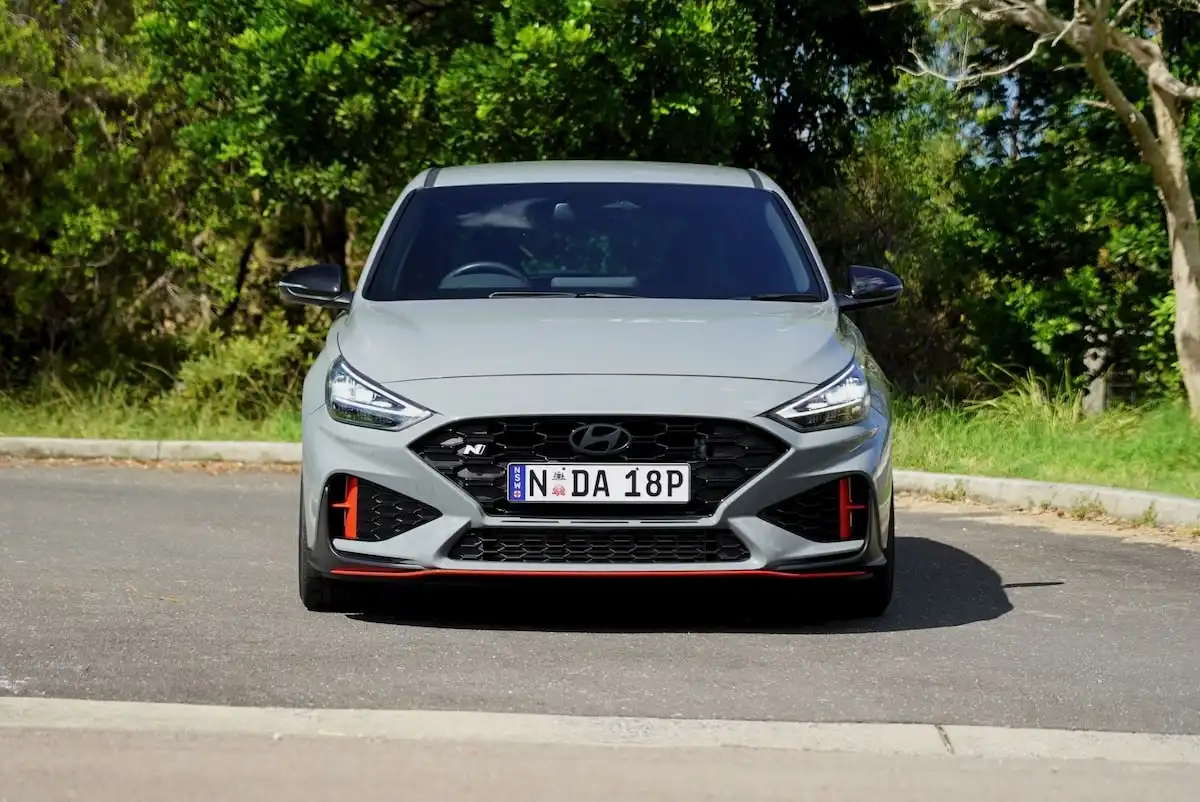
Five Hyundai i30 N Specs You Need to Know
-
Five-year/unlimited-kilometre warranty
-
2.0-litre turbocharged four-cylinder (206kW / 392Nm)
-
0 - 100km/h in 5.6 seconds
-
8.6L per 100km fuel economy figures
-
381 - 1,287L boot space
Get in touch with one of our Car Buying Specialists today.
Request a quote